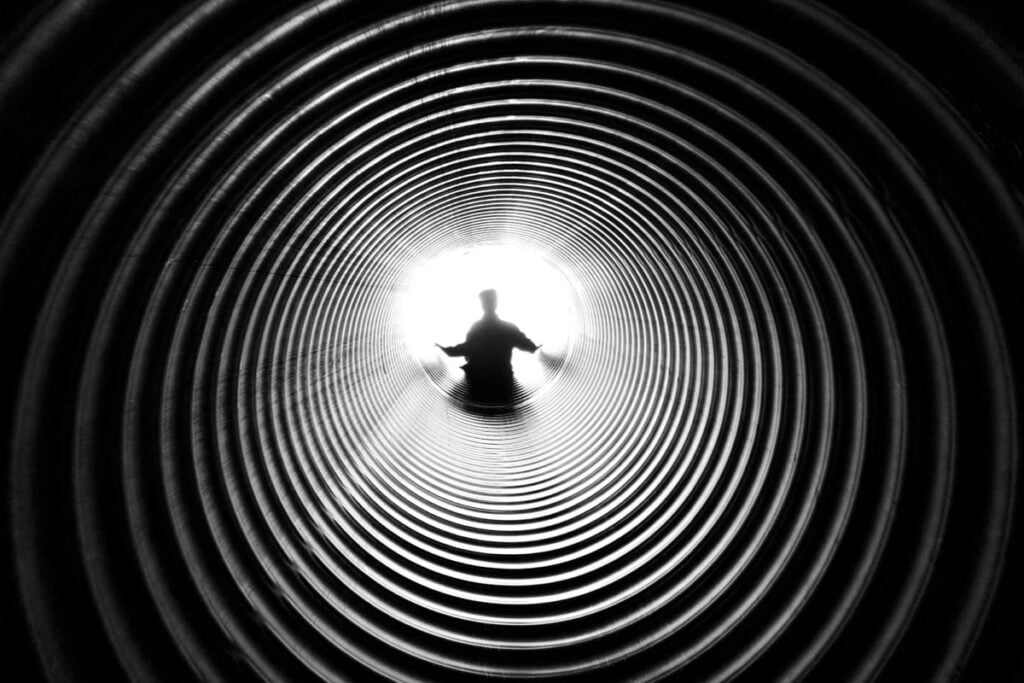Death remains one of life’s greatest mysteries. While no one can provide a definitive answer to what it feels like to die, insights from physical changes, near-death experiences, spiritual beliefs, and religious perspectives offer glimpses into this profound transition. Understanding the dying process can help us make sense of a moment we will all eventually face, either for ourselves or our loved ones.
What is the Physical Experience of Dying?
As the body nears the end of life, a series of physical changes occur. Days or even weeks before death, the body begins to shut down, leading to symptoms such as extreme fatigue, changes in breathing patterns, decreased appetite, and a sense of overall weakness. Blood circulation slows, often causing the extremities to feel cold and leading to tingling or numb sensations.
Pain can vary widely depending on the cause of death. Some individuals experience significant discomfort, while others feel little to no pain, especially when receiving modern palliative care. Medical professionals use medications to manage pain, and the body’s own release of endorphins during the dying process can bring a sense of relief and calm. Many describe a feeling of relaxation as the body naturally begins to let go.
What Happens to the Mind and Consciousness?
As death approaches, consciousness can shift. Confusion, hallucinations, and altered awareness are common, with some individuals seeing visions of deceased loved ones or experiencing vivid dreams. These changes may be due to the brain’s adjustments as it prepares to shut down. Some describe feelings of detachment, as if observing their own body from a distance.
A frequently reported phenomenon is the ‘tunnel of light.’ Many who have had near-death experiences describe a sensation of moving toward a bright, warm light or floating peacefully above their bodies. These experiences hint at a transformation in consciousness, possibly linked to decreased brain activity or a coping mechanism for the dying mind. However, explanations like reduced brain function or chemical changes may be a stretch, as many near-death experiencers report clarity and heightened awareness.
Experts who explore the concept of an afterlife, such as neurosurgeon Eben Alexander, suggest that these experiences might indicate consciousness existing beyond the brain. Alexander, who had a profound NDE during a coma, argues that his vivid and coherent experiences are evidence of a reality beyond the physical, challenging traditional neurological explanations. Such perspectives add a layer of mystery to what happens at the edge of life, hinting that the mind’s transformation during death might be more than just a biological response.
What Are the Emotional and Psychological Aspects of Dying?
Emotions during the dying process can range from intense fear to profound peace. Some individuals struggle with anxiety and uncertainty, while others experience acceptance, finding a sense of calm in their final days. Those who have near-death experiences often speak of a deep, comforting warmth, a sensation of love, or a sense of being welcomed.
Closure is another key factor. Being able to say goodbye to loved ones or resolve unfinished matters can lead to an emotional release, providing peace during the final moments. A phenomenon known as a ‘life review’ is also reported, where individuals vividly recall important events or significant experiences as they approach death. Research from hospice and palliative care providers often includes observations of these emotional transitions.
Do the Dying Have Visions of Deceased Loved Ones?
Many people nearing the end of life report experiencing visions of deceased relatives or loved ones. These visions often occur in the final days or hours and can provide comfort to the dying person. Individuals describe seeing loved ones standing by their bedside, talking to them, or simply being present. These encounters are frequently vivid and emotionally impactful, offering a sense of peace and reassurance.
Dr. Christopher Kerr, a hospice doctor from Buffalo, has written extensively about these experiences in his book, “Death Is But a Dream: Finding Hope and Meaning at Life’s End”. Kerr’s research suggests that these visions are not simply hallucinations but hold deeper meaning, often bringing comfort to the dying. His work challenges the idea that such experiences are the result of a brain in distress, pointing instead to a potentially profound aspect of the dying process.
What are Near-Death Experiences and What Do They Reveal?
Near-death experiences provide some of the most compelling insights into what dying might feel like. Common themes include a sense of peace, feelings of detachment from the physical body, and encounters with deceased loved ones. While skeptics often attribute these experiences to oxygen deprivation in the brain, the evidence does not fully support this theory.
In cases of oxygen deprivation, one would expect confusion and disorientation. However, those who have had NDEs frequently report clarity and coherence, describing detailed and vivid experiences. Even when oxygen levels remain relatively stable, individuals have recounted seeing bright lights, feeling love, or having a sense of profound calm. Studies on brain activity during NDEs show high levels of lucidity, challenging the idea that they are mere side effects of a deprived brain. Instead, these experiences suggest that there may be something deeper occurring when one faces death. The Journal of Near-Death Studies offers scholarly research on this topic.
What are the Spiritual and Religious Interpretations of Dying?
Different cultures and faiths have unique perspectives on the experience of dying. Here’s a look at how major religions view the end of life:
- Christianity
Christians often view death as a passage to eternal life, where the soul is judged and rewarded or punished based on earthly actions. Many Christians believe in Heaven as a place of peace and comfort, while others focus on resurrection at the end of time. Comfort is often found in the idea of reuniting with loved ones and being in the presence of God. - Judaism
In Judaism, there is a focus on the importance of this life rather than speculating about the afterlife. However, many Jewish teachings speak of the soul’s journey after death, including concepts like Gan Eden (a form of paradise) and Gehenna (a temporary purification state). End-of-life rituals emphasize the dignity and sanctity of the body, with an emphasis on a peaceful and respectful death. - Islam
Muslims believe that the soul continues after death and that there is a Day of Judgment when all will be held accountable for their deeds. The Qur’an describes a peaceful existence for the righteous in paradise and a challenging fate for wrongdoers. Death is seen as a transition to the afterlife, and dying with the remembrance of Allah is considered crucial. Muslims often find comfort in the belief that death is a return to God. - Buddhism
Buddhists view death as part of the cycle of samsara, a continual cycle of death and rebirth driven by karma. Enlightenment, or Nirvana, is the ultimate goal, ending this cycle. The dying process is seen as a significant time for spiritual transformation, with focus placed on mindfulness, detachment from worldly concerns, and preparing the mind for a good rebirth. - Hinduism
Hindus believe in the cycle of reincarnation, where the soul is reborn into a new body according to one’s karma. Death is not feared but seen as a natural transition to the next stage. Moksha, or liberation from the cycle of rebirth, is the ultimate spiritual goal. Rituals at the time of death, such as chanting and prayers, help prepare the soul for its journey. - Sikhism
Sikhs believe in reincarnation and karma but focus on merging with God (Waheguru) as the ultimate goal. Death is seen as a return to the divine, and the focus is on living a truthful, honest life to achieve this unity. Sikhs often find peace in the belief that the soul will merge with the eternal, ending the cycle of birth and death.
These beliefs shape how individuals experience their final moments, providing comfort, reducing anxiety, and offering meaning. Faith can influence not just how someone lives, but also how they die. A strong spiritual or religious belief often brings peace to those facing the end, as they rely on the conviction of an afterlife or the continuation of the soul.
What Do Hospice and Palliative Care Workers Say?
End-of-life care professionals witness the dying process daily, offering a unique and compassionate perspective. Hospice nurses, palliative care doctors, and spiritual counselors frequently observe that many patients shift from restlessness to calm as death draws near. They describe moments of deep peace, even in individuals who were previously anxious.
These professionals focus on comfort—both physical and emotional—during the final stages of life. Pain management, emotional support, and creating a tranquil environment are all essential to easing the transition. Their observations suggest that while dying can be challenging, it can also be a gentle, peaceful experience. For further reading, the National Hospice and Palliative Care Organization provides guidance and research on end-of-life care.
Is There a Common Experience or a Unique Journey?
The dying process is profoundly individual. While certain elements—like the sensation of peace, detachment, or visions of light—are common, each person’s experience is unique. Factors like the cause of death, pain management, emotional state, and personal beliefs play a significant role in shaping what the final moments will feel like.
Despite the variability, many accounts share a sense of calm and acceptance, hinting that the end of life may not be as frightening as it seems. These similarities provide hope that dying, though deeply personal, may carry a sense of tranquility.
What are Some Good Books About Dying
Exploring books on the subject offers further insight into what dying feels like and what might lie beyond:
- “Being Mortal: Medicine and What Matters in the End” by Atul Gawande explores the realities of death in a medical context, emphasizing dignity and quality of life.
- “The Five Invitations: Discovering What Death Can Teach Us About Living Fully” by Frank Ostaseski offers a Buddhist-inspired view on dying, focusing on lessons for living well.
- “Proof of Heaven: A Neurosurgeon’s Journey into the Afterlife” by Eben Alexander shares a near-death experience from a neurosurgeon’s perspective, offering insights on consciousness.
- “Dying: A Memoir” by Cory Taylor presents a personal account of facing terminal illness, reflecting on memory and meaning in the final moments.
- “Surviving Death: A Journalist Investigates Evidence for an Afterlife” by Leslie Kean examines evidence of an afterlife, including near-death experiences and reincarnation.
These books offer perspectives from medical, personal, and spiritual angles, providing a more complete picture of death’s mysteries. Whether you’re curious about the physical, emotional, or spiritual side of dying, these accounts can help unravel what it might be like to face life’s final chapter.
Questions?
Do you have questions about this or any other aspect of the funeral industry? Send us a question and our experts will do their best to help you. Click here.







